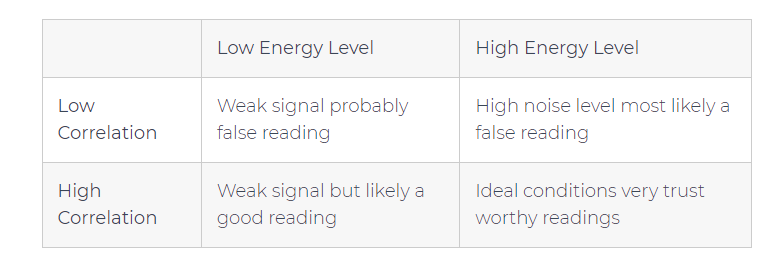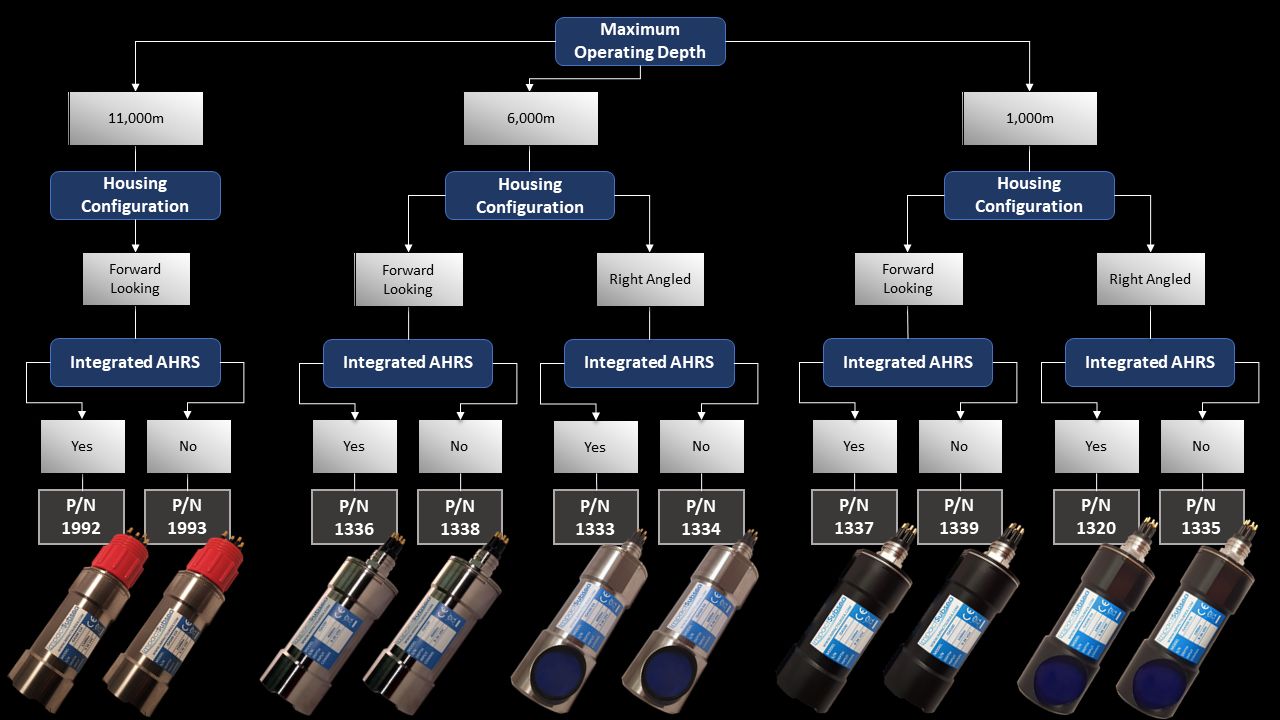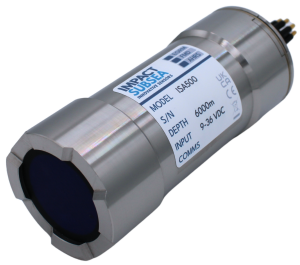
Technical Introduction of the Impact Subsea ISA500 Underwater Altimeter
The ISA500 is widely used as an underwater Altimeter on Remotely Operated and Autonomous Underwater Vehicles. It is also used as a high accuracy underwater ranging device, providing distance measurement to any target aimed at.
Measurement range - how far away will it be able to detect targets?
A critical consideration when choosing an underwater Altimeter is how far away it will be able to detect the seabed (or other targets).
A digital correlation echo detection technique combined with a highly sensitive composite transducer enables the ISA500 to provide market-leading range performance from a 500kHz frequency Altimeter.
The ISA500 is characterised as having a range capability above 120 meters / 393 feet.
The sensor operates on sonar technology – it transmits a pulse of sound and times how long it takes for the sound to return. Based on the time is taken, it calculates the distance travelled by the sound and derives the range to target.
The overall range capability will largely depend on the acoustic reflectivity of the item it is pointed at. For example, if pointed at a seabed with a large amount of marine growth on the surface, a reasonable proportion of the pulse of sound will be absorbed. In which case, a range of 80 meters/ 262 feet or less may be achievable. On the other hand, if the seabed has a strong reflector, such as solid rock, ranges above 175 meters / 575 feet can be achieved.
The sensitivity of the ISA500 ensures that the longest range possible for the environment it is operating in can be achieved.
Measurement accuracy and repeatability
For many applications, the accuracy and repeatability of distance measurement are highly critical.
As mentioned previously, the ISA500 uses an advanced digital correlation technique to detect the reflected pulse of sound. This digital correlation is run 2,000,000 times per second. This gives the ISA500 an accuracy level of 0.7mm, then rounded up to the nearest 1mm.
This allows the ISA500 to provide 1mm accuracy and repeatability in range measurements. This introduces the sensor to applications where previously only technologies such as a laser-based measurement system would suffice.
A critical point to appreciate is that the ISA500 offers 1mm accuracy as well as resolution.
When defining the capability of an Altimeter, it is important to recognise the difference between resolution and accuracy. Several alternative Altimeters are quoted as having ‘1mm resolution’, which in itself is a relatively meaningless statement unless the Altimeter also has 1mm accuracy. Otherwise, the sensor is simply providing centimetre level of accuracy to 1mm precision.
When choosing an Altimeter, one should always check the measurement accuracy – not just the resolution.
The below is a short example of the ISA500 achieving 1mm accuracy in distance measurement over a 1-meter range:
Measurement quality -how trustworthy is the reading which has been made?
A key question with every reading from an underwater Altimeter is: how trustworthy is the reading which has been made?
In addition to the distance measurement value, several serial output strings from the ISA500 also report back the energy level of the echo and a correlation factor.
The energy level ranges from 0 to 1, where 1 represents the full saturation of the ISA500 receiver. An energy level of 0.707 (square root of 2) is the perfect theoretical level. It represents the energy of a pure sine wave with an amplitude utilising the maximum dynamic range of the ISA500.
The correlation factor ranges from 0 to 1, which represents a quality factor of the returned echo. A value of 1 would represent a return echo of perfection with negligible noise and distortion.
The correlation value alone can be used as a trust factor where low values such as 0.3 would indicate that a reading is likely incorrect. In practice, ISA500 sensors are pre-set to ignore all returning echoes with a correlation level below 0.5. This ensures every reading produced by the sensor is of a high-quality level.
A more detailed picture can be built by combining this information with the energy level as shown in the table:
With energy and correlation values, the quality of the distance reading provided by the ISA500 is always clear.
Acoustic bandwidth:
The ISA500 can be operated at any frequency from 400 to 600kHz. The performance across this bandwidth is relatively uniform, with a slight increase in performance at the 500kHz point.
The available bandwidth allows multiple ISA500 sensors to be operated in close proximity, all at slightly offset operational frequencies. This ensures that there is no interference between sensors.
The available bandwidth also allows the sensor to be adjusted to another frequency to move it out of the band of other acoustic devices in operation (Sonars, Profilers, DVLs etc.). Thus, ensuring there is no interference with third party systems.
Interfacing:
The ISA500 comes as standard with both RS232 and RS485 serial interfaces integrated into the sensor.
The sensor can run directly into Impact Subsea’s seaView software, or it can output any number of ASCII strings for integration into third-party systems. This includes proprietary Impact Subsea strings but also the ability to emulate any other underwater Altimeter – making the ISA500 a very simple sensor to retrofit to existing systems.
In addition, the ISA500 has a voltage and current analogue output as standard, which can be scaled across a user-defined distance and output voltage/current.
Software configuration:
One of the key benefits of the ISA500 is that all settings are entirely software configurable. There is never a requirement to open the sensor – all settings can be adjusted using the freely available seaView software.
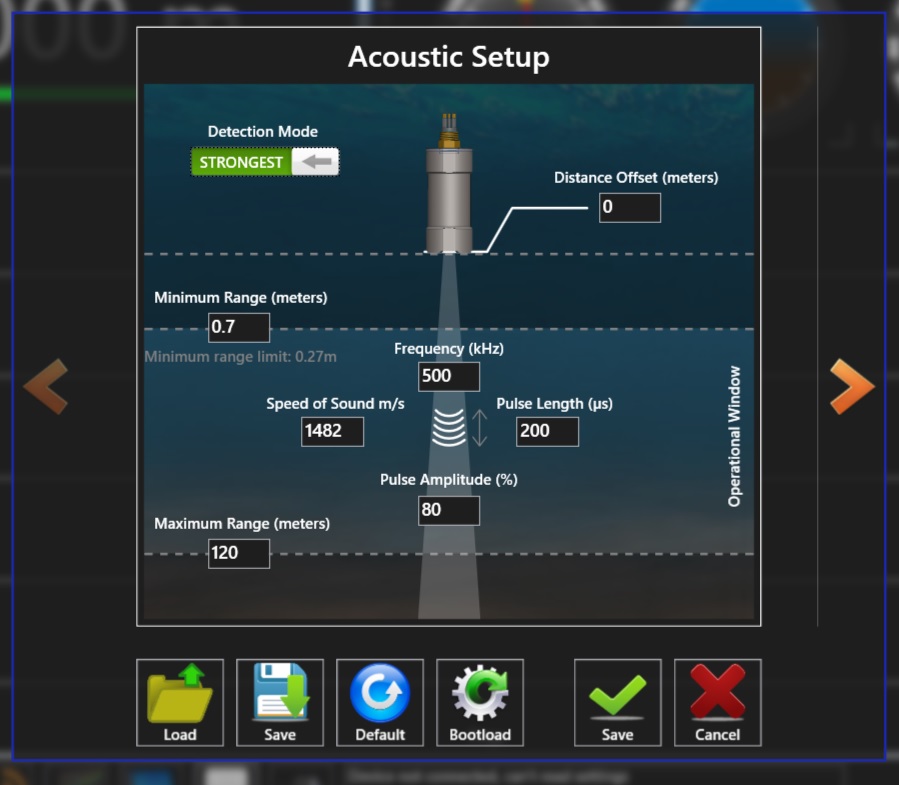
seaView ISA500 Acoustic Setup
From an acoustic perspective: the detection mode, minimum and maximum ranges, pulse length, operational frequency etc., can all be altered to allow the ISA500 to achieve the best performance possible in the application to hand.
The communications mode, output strings, update rate etc., can all also be configured using the seaView software and then saved to the sensors firmware.
The below video provides an overview of the ISA500 application showing where all the core elements of the user interface are, and highlights the settings available on the ISA500 sensor itself.
Multi-Echo:
Most underwater Altimeters will output a single distance reading. The ISA500 can do this; however, it also can output the distance reading of every echo that is returned to the sensor. This allows multiple targets to be tracked within the acoustic beamwidth of a single ISA500.
Detection mode:
The ISA500 has several detection modes to select which returning echo is used when calculating the distance measurement.
‘First’ detection mode will use the very first echo to be returned. This mode is ideal for use in high multi-path environments such as water tanks. Once the first echo has been returned, all other echoes will be ignored.
‘Strongest’ detection mode will use the strongest (highest amplitude) echo returned. In this mode, smaller echoes will be ignored and only the largest reflected echo from the seabed used. This provides very stable range measurements, especially helpful in applications with a large amount of suspended sediment (such as trenching).
‘Seabed tracking’ will use an algorithm to determine where the seabed is and will operate to track this range, ignoring any obviously incorrect readings.
‘First’ detection mode will use the very first echo to be returned. This mode is ideal for use in high multi-path environments such as water tanks. Once the first echo has been returned, all other echoes will be ignored.
‘Strongest’ detection mode will use the strongest (highest amplitude) echo returned. In this mode, smaller echoes will be ignored and only the largest reflected echo from the seabed used. This provides very stable range measurements, especially helpful in applications with a large amount of suspended sediment (such as trenching).
‘Seabed Tracking’ will use an algorithm to determine where the seabed is and will operate to track this range, ignoring any obviously incorrect readings.
Attitude & heading reference system:
The ISA500 is optionally available with an in-built Attitude and Heading Reference System (AHRS). This provides Heading, Pitch and Roll as a secondary output.
Aside from a useful additional measurement parameter, the AHRS can also be used internally within the ISA500 to correct Pitch and Roll.
Usually, if the vehicle or asset on which the Altimeter is mounted pitches or rolls, this causes the Altimeter to measure slant ranges and will make the Altitude reading rise up and down, despite there being no actual change in Altitude. The AHRS can be used to correct the pitch/roll by changing the slant range measurement into actual altitude through basic trigonometry.
This ability can be turned on and off in the ISA500 settings.
Physical configuration:
To ensure the ISA500 is simple to integrate into any application, a variety of physical configurations exist. The ISA500 is available in Titanium or Acetal materials; both are used due to their longevity.
The ISA500 is also available in forward-looking or right-angled housing and to various depth ratings from 1,000 meters to 11,000 meters.
Alternative OEM options are also available for direct integration into your own housing if required.
For example, the Acetal Right Angled ISA500 sensors are a popular choice to use in towed Magnetometers. OEM options are useful for small compact AUVs. The Titanium Forward-Looking ISA500 sensors are a popular choice for medium and work-class remotely operated vehicles.
Robustness:
The ISA500 has been designed and built with the highest levels of longevity and robustness in mind.
As already highlighted, the housing materials used are either Acetal or Titanium, chosen due to their longevity and strength.
The electronics are of commercial grade and are of single-board design. All components are low mass to ensure excellent shock and vibration performance. No screws are used within the design, with a snap and lock together methodology being used to ensure no parts can come loose over time.
The ISA500 sensor has undergone vigorous environmental testing. This includes vibration, shock and thermal testing to meet the stringent requirements of API 17F qualification.
Overall:
The ISA500 Altimeter/Echosounder/Ranger provides a long-range underwater measurement capability combined with a high level of accuracy.
The ability to configure all aspects of the sensor via software enables the sensor to be easily tuned to suit the application at hand.
A robust design ensures that the ISA500 is suitable for the most challenging of environments.
Do you have questions about this article?
Get in touch with Impact Subsea, and they would be happy to answer any questions you have about pricing, suitability, availability, specs, etc.
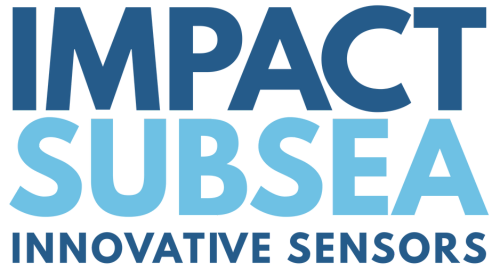
Related products




